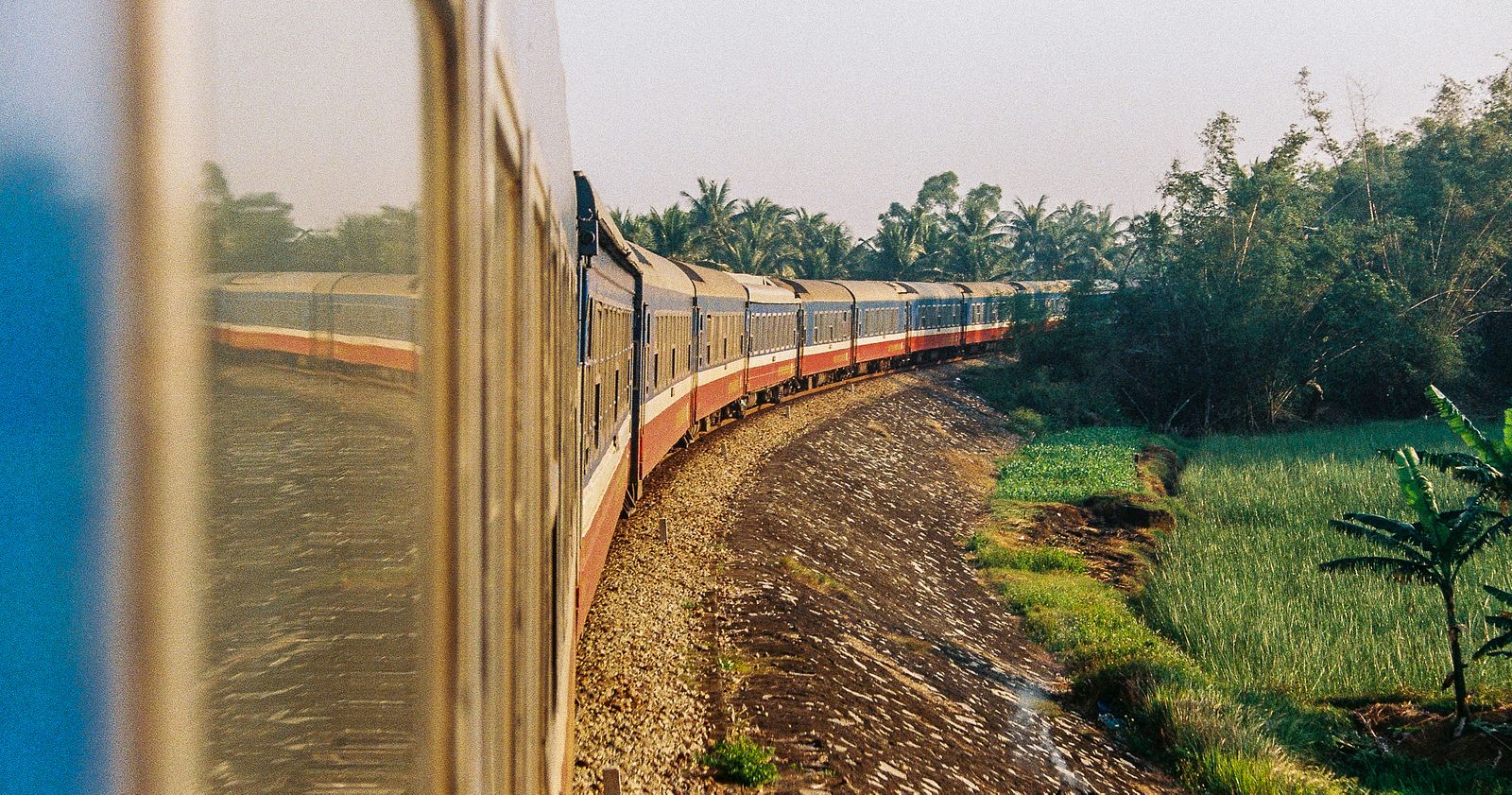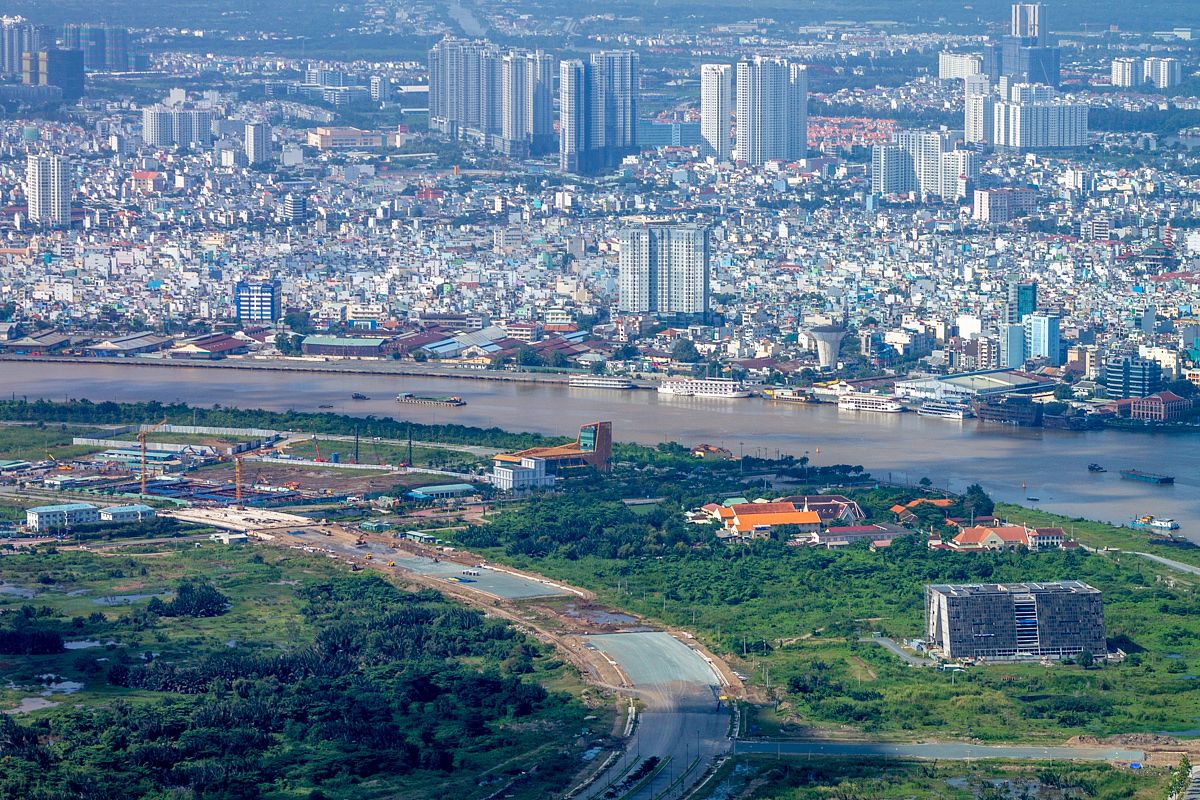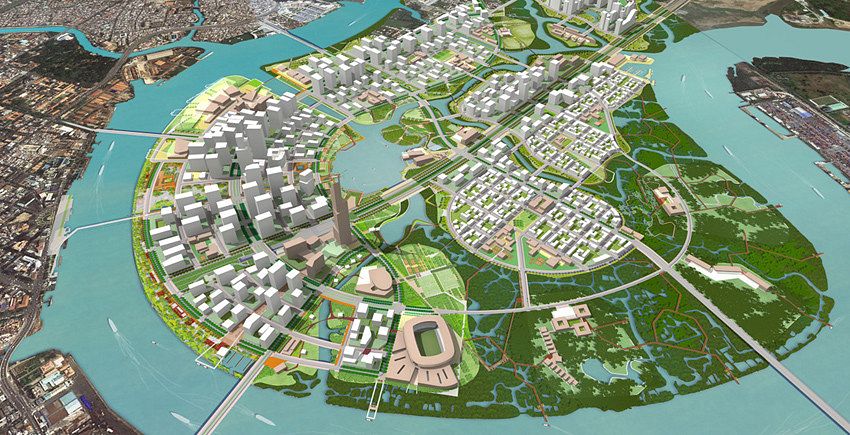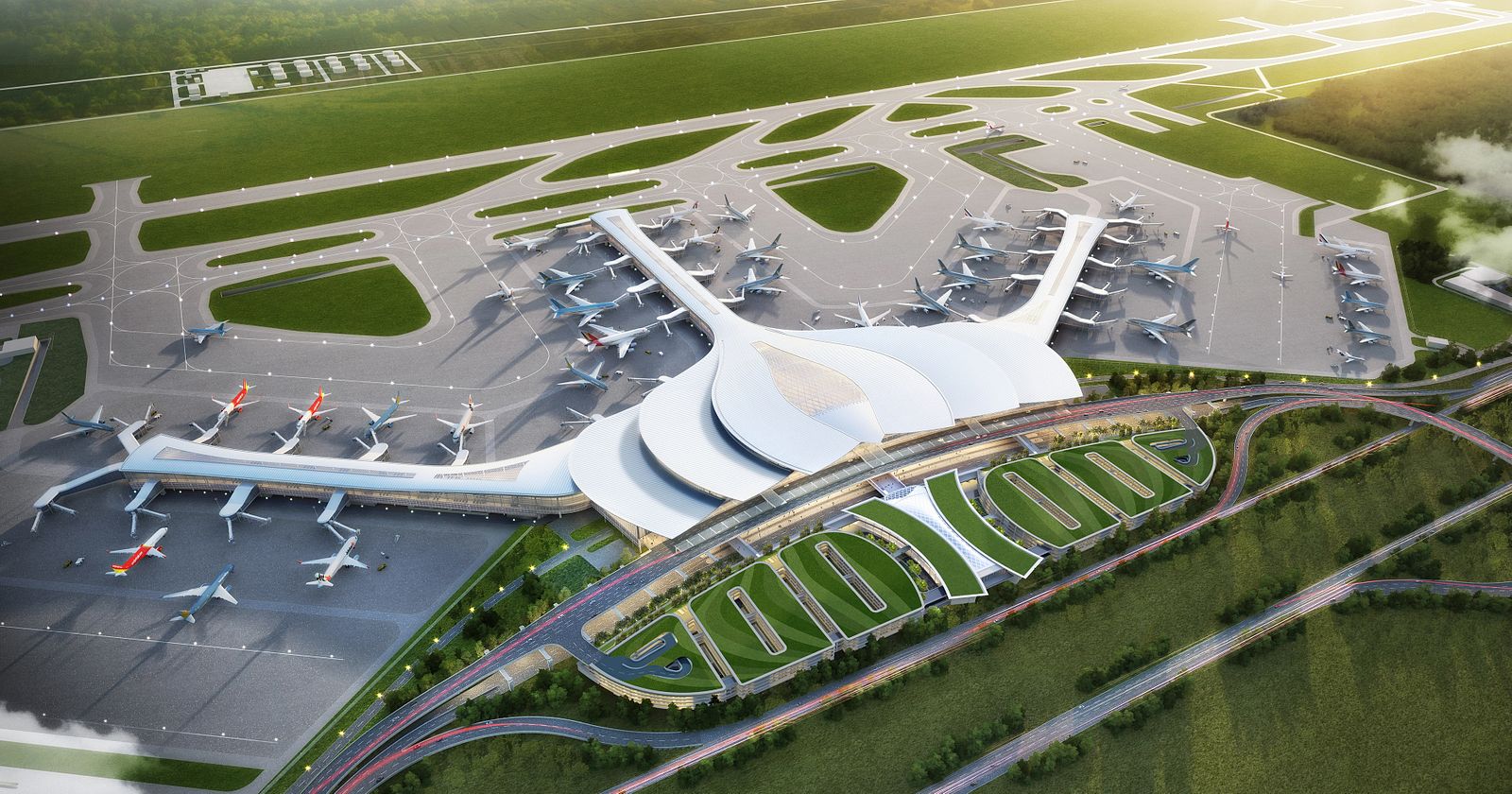Across the Saigon River from central District 1’s glass-and-steel skyscrapers, the Thu Thiem New Urban Area is slowly – very slowly – taking shape. Named after the swampy peninsula on which it sits, this long-gestating development will, perhaps, someday become a new financial, residential and commercial center, taking pressure off Saigon’s overcrowded interior districts.
Currently, however, the area is a checkerboard of partially completed high-rises, half-finished roads, rubble-strewn lots and mud. The uneven development of different areas of Thu Thiem makes it clear that it will be a while before this dream becomes reality.
Thu Thiem’s Long History
Official desires to expand Saigon into Thu Thiem are not new. In fact, development maps have included the peninsula for nearly a century, according to Erik Harms, an associate professor of Anthropology & Southeast Asia Studies at Yale University and author of the 2016 book Luxury and Rubble: Civility and Dispossession in the New Saigon.
Harms’ book analyzes Phu My Hung, arguably the most successful planned neighborhood in Vietnam, and Thu Thiem, Saigon’s hugely ambitious but problematic grand design.
“If you look at French documents you could see plans to build a new urban center there under Hebrard in 1923,” Harms tells Saigoneer. Ernest Hebrard was head of the Indochina Architecture and Town Planning Service during the 1920s, and his vision for the expansion of Saigon included development on Thu Thiem.

Thu Thiem can be seen at the bottom of this map created by Ernest Hebrard in 1928. Image via Luxury and Rubble.
That systematic development never happened, and in 1965 the government of South Vietnam contracted Doxiadis Associates International Co. Ltd., a renowned urban planning house based in Athens, Greece, to create a five-year urban development plan. This included a detailed map of Thu Thiem showing how it could be turned into a modern part of Saigon.

Doxiadis Associates' 1965 "Saigon Metropolitan Area; Volume 3, Pilot Project" vision of Thu Thiem. Image via Luxury and Rubble.
Again, however, Thu Thiem continued to languish as largely empty marshland. In 1972 the San Francisco-based architecture firm Wurster, Bernardi & Emmons, Inc. was hired to study Thu Thiem. The designers went on to release the most specific design yet, features of which can be clearly seen in the contemporary vision of the peninsula’s future layout.

The 1972 Thu Thiem development map created by Wurster, Bernardi & Emmons, Inc. Image via Luxury and Rubble.
Look across the river from downtown today, though, and it’s clear this plan never came to fruition either.
Harms shares that the primary factor holding back Thu Thiem’s development is the reluctance of local residents to leave their homes. While the peninsula is far less developed than the rest of the city, it is still home to a long-standing community of houses, temples, churches and markets, though many of these have been demolished.
“The basic story is that people don’t want to be evicted from their homes,” Harms says. He spent two months visiting the area every day while researching his book. “What I found that was the most surprising is that people were not angry about the idea of the project,” he says. “They knew about the master plan, they weren’t ignorant.”
They were, however, upset about the amount of money they were being offered to leave. “People felt like there are a lot of people making a lot of money off this project and [they’re] not getting enough compensation for our land.”
During a recent visit to Thu Thiem, people living there shared a utilitarian view towards its development. Truong, a delivery driver who moved to the peninsula three years ago to be closer to his business, rents a room from a woman who has lived in the area for three decades and has refused to leave since she hasn’t been offered what she considers fair compensation.
“If we have to move I’ll find somewhere else to live in the city,” Truong tells Saigoneer in Vietnamese. A construction worker from An Giang province sitting nearby takes a break from playing video games on his phone to chime in: “Once the building I’m working on is finished, I’ll just move on to the next building.”
Tam, an older woman who rents a room in the same complex, moved to Thu Thiem from Binh Thanh District so she could have more space. She sells popcorn cooked in a large vat which sits upon a fire fueled by timber from demolished houses.
“When I have to leave I’ll have to look for somewhere to live elsewhere in Saigon,” Tam shares in Vietnamese. “Some people have taken the compensation even though it wasn’t enough, and then try to ask for more once they are living in another district.”
Across the river in District 1 and Binh Thanh, luxury high-rise developments stand in stark contrast to Thu Thiem’s muddy squalor. Construction sites on the peninsula are bordered by shanty communities of migrant workers. A complete lack of infrastructure means they often bathe, defecate and do laundry in the same pools of water. On a weekday morning after the new school year had started, several children scampered around, helping prepare breakfast or hang clothes out to dry.

Living quarters for migrant construction laborers working on Thu Thiem. Photo by Michael Tatarski.
Complexes of bland apartment buildings intended for people who have been evicted stand in the distance, but they are mostly empty.
This is not surprising, given what Harms’ found during his time in the area. “People would regularly cite a regulation in the land law that says that in the case of eviction, people need to be compensated to a degree that allows them to find something that is equal to, or better than, the previous place,” he says. “They would say that they’re not getting that.”
Since the values of developments within the new urban area are published in local newspapers, it is easy for residents to determine whether they are getting a fair deal. “People would regularly cite these things they read in the paper or heard on the street about how certain plots of land were being sold for, say, VND100 million per square meter, when their compensation was only a few thousand per square meter,” Harms shares.
“I don’t think the planners’ original goal was to rip people off, but this is where the frustration of planners comes from,” Harms says. “What happens is they have this beautiful idea that on paper seems like a brilliant solution, but when people stand up and protest and the plan has kinks in it, they can’t really deal with it.”
Phu My Hung: The Model
Meanwhile about 10 miles south of Thu Thiem, Phu My Hung in District 7 serves as a paragon of design and efficiency. “It’s modernism at its most utopian,” Harms says. “Everything is figured out.”
Visit the area and the appeal of living there is immediately apparent, especially for anyone looking to escape the haphazard chaos of Saigon’s older districts. Broad, tree-lined streets run past landscaped villas, apartment complexes and shopping centers. Far less rubbish fills the gutters, and green space is abundant.

The Crescent, a residential and commercial area in Phu My Hung. Photo by Brandon Coleman.
The irony is that Phu My Hung wasn’t first envisioned until the late 1980s, yet it is already complete, while Thu Thiem’s development has crawled along despite decades of plans and national-level attention.
Lawrence S. Ting, a Taiwanese land prospector, is considered the father of Phu My Hung, and when he arrived in Vietnam in 1989 many thought he was crazy for taking on what was, at the time, mostly swampland. “He wanted to do something across the river [from District 1] since it’s right there, but they [city planners] saved it for themselves since it’s better,” Harms says.
“But fast-forward 20 years later and Phu My Hung is the most lucrative project in the country and Thu Thiem is mired in controversy.”
Harms argues that the issues surrounding relocation and compensation discussed above explain this gap. “When the evictions for Phu My Hung were carried out, they did it all in 1993 and 1994,” he says. This was just after Vietnam had introduced a new regulation which allowed residents to obtain land use permits for the first time.
“At the time the land law had just emerged and there was no real estate market so they compensated at really low levels and people left without major complaints,” Harms adds. “They didn’t really start the compensation in Thu Thiem until 2002.”
By then, residents had a firm understanding of the value of the land they lived on, and they were much less willing to let go of it. “Then 2002 rolls around, and these are also people who live right across the water from downtown District 1, so they know about value and by then Phu My Hung was already on its path and they’re not fools,” Harms elaborates.
As for the future, Harms believes the Thu Thiem New Urban Area will come to fruition, but it may not look like the various visions which planners have put forth over the years.
“If you look at a map of Saigon from Google Earth, it’s quite clear that the city will fill in that spot eventually,” he says. “I don’t doubt that someday lots of things will be built there. What’s happening already, which again people criticize, is that the original plan was for one big designer like in Phu My Hung that would keep the aesthetic, and now it’s being parceled out…but at this point if someone makes an offer they [city leaders] have to take it because they can’t get someone to invest in the whole thing.”
This leaves people like Truong and Tam in limbo, but it appears they're ready to move on to whatever part of ever-expanding Saigon they can afford once Thu Thiem's development takes hold.














